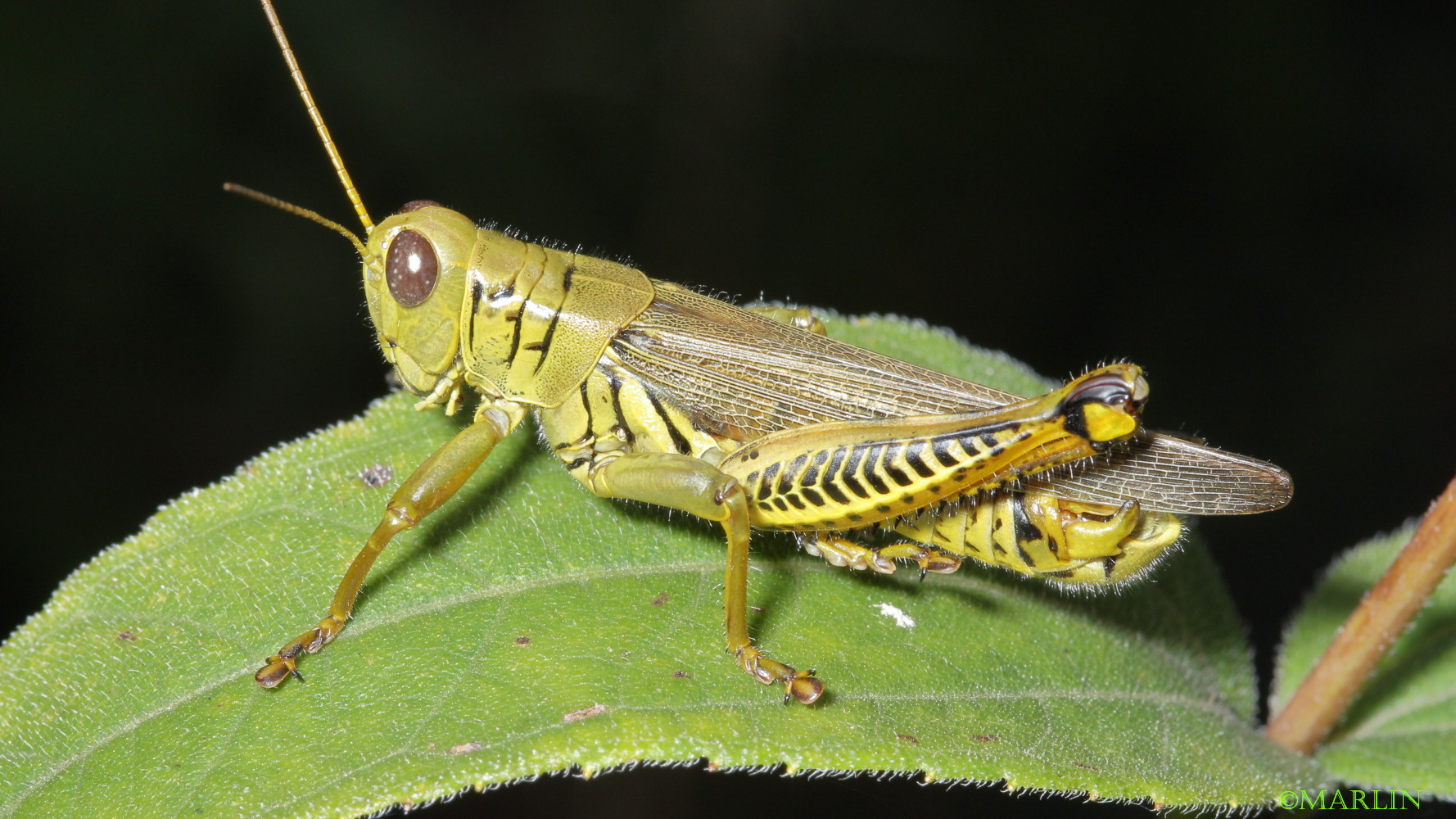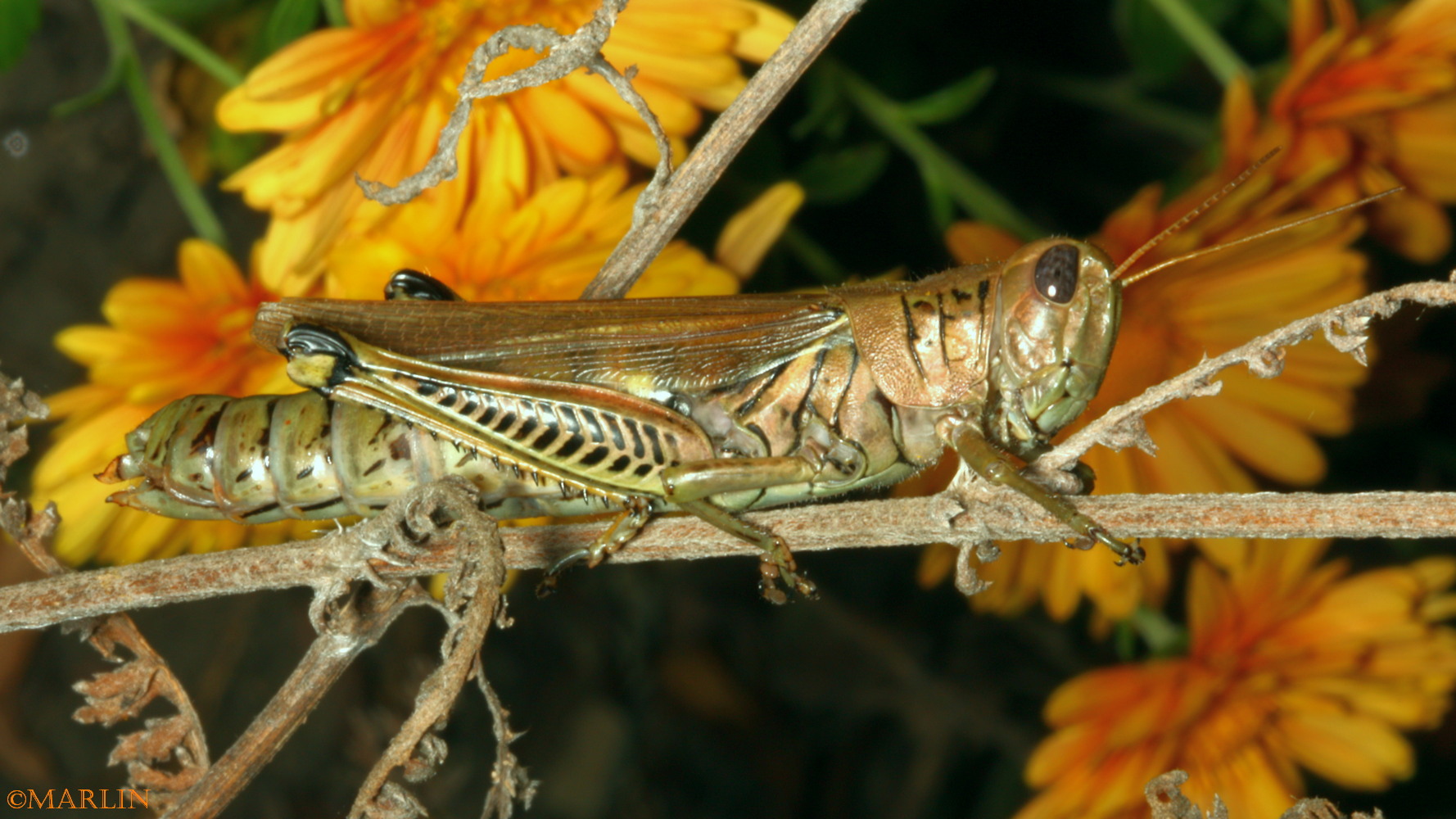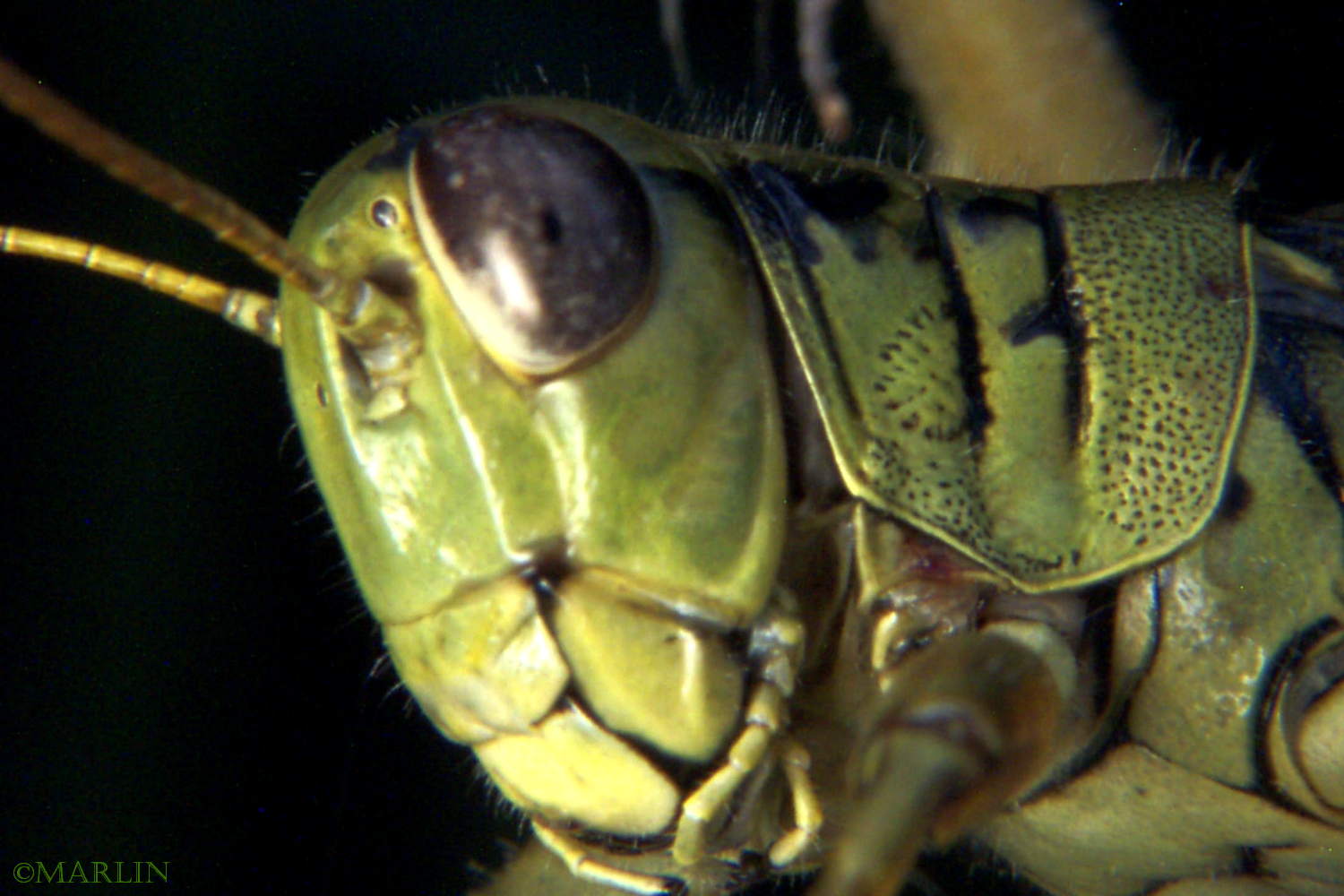Differential Grasshopper – Melanoplus differentialis

Grasshoppers have antennae that are almost always shorter than the body, and short ovipositors. Those species that make noise usually do so by rubbing the hind femurs against the forewings or abdomen (stridulation), or by snapping the wings in flight. Tympana, if present, are on the sides of the first abdominal segment. The hind femora are typically long and strong, fitted for leaping. Generally they are winged, but hind wings are membranous while front wings (tegmina) are coriaceous and not used for flight.
Females have two pairs of valves ( triangles) at the end of the abdomen used to dig in sand when egg laying.
In many places around the world, grasshoppers are eaten as a source of protein. In Mexico, chapulines are eaten as a snack food or used as filling in burritos or fajitas. Open-air markets in China frequently feature grasshoppers roasted on skewers.
Order Orthoptera – Crickets, Grasshoppers & Katydids
Insects | Spiders | Beetles | Butterflies | Moths | True Bugs | Flies | Bees & Wasps


